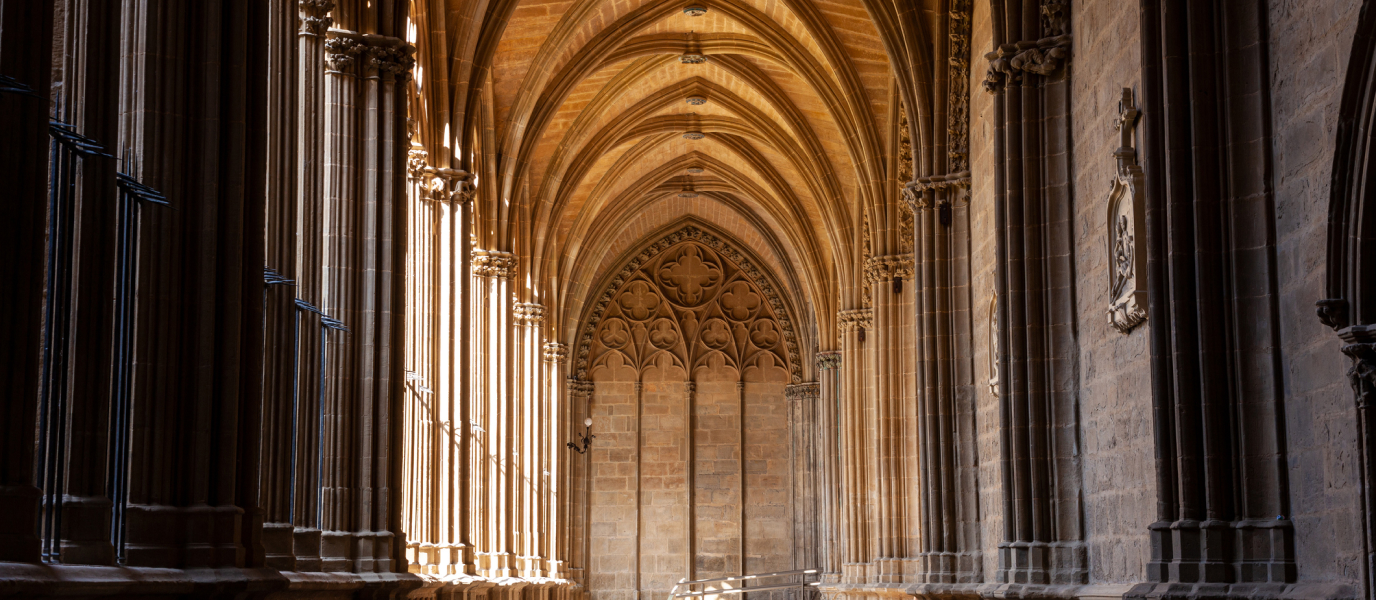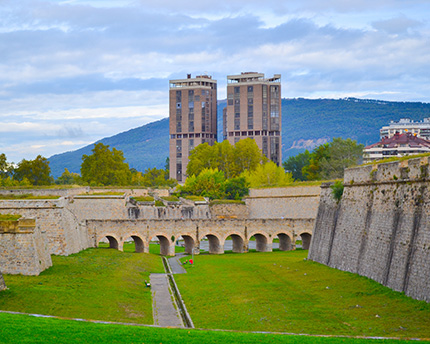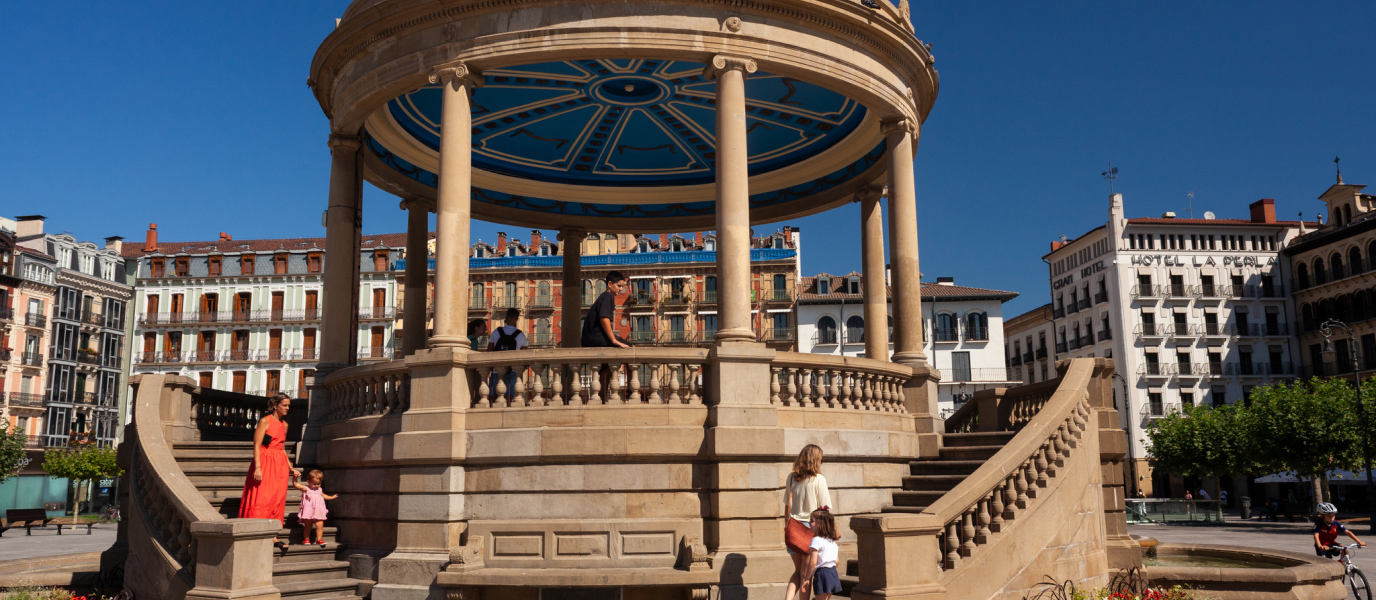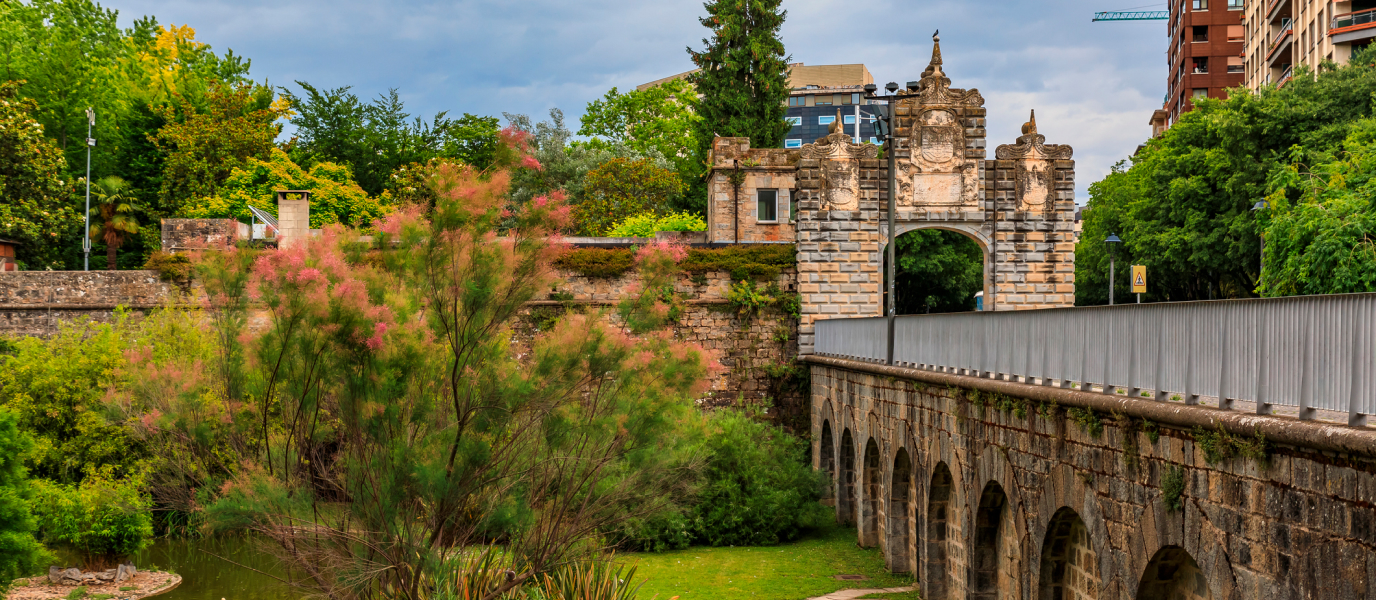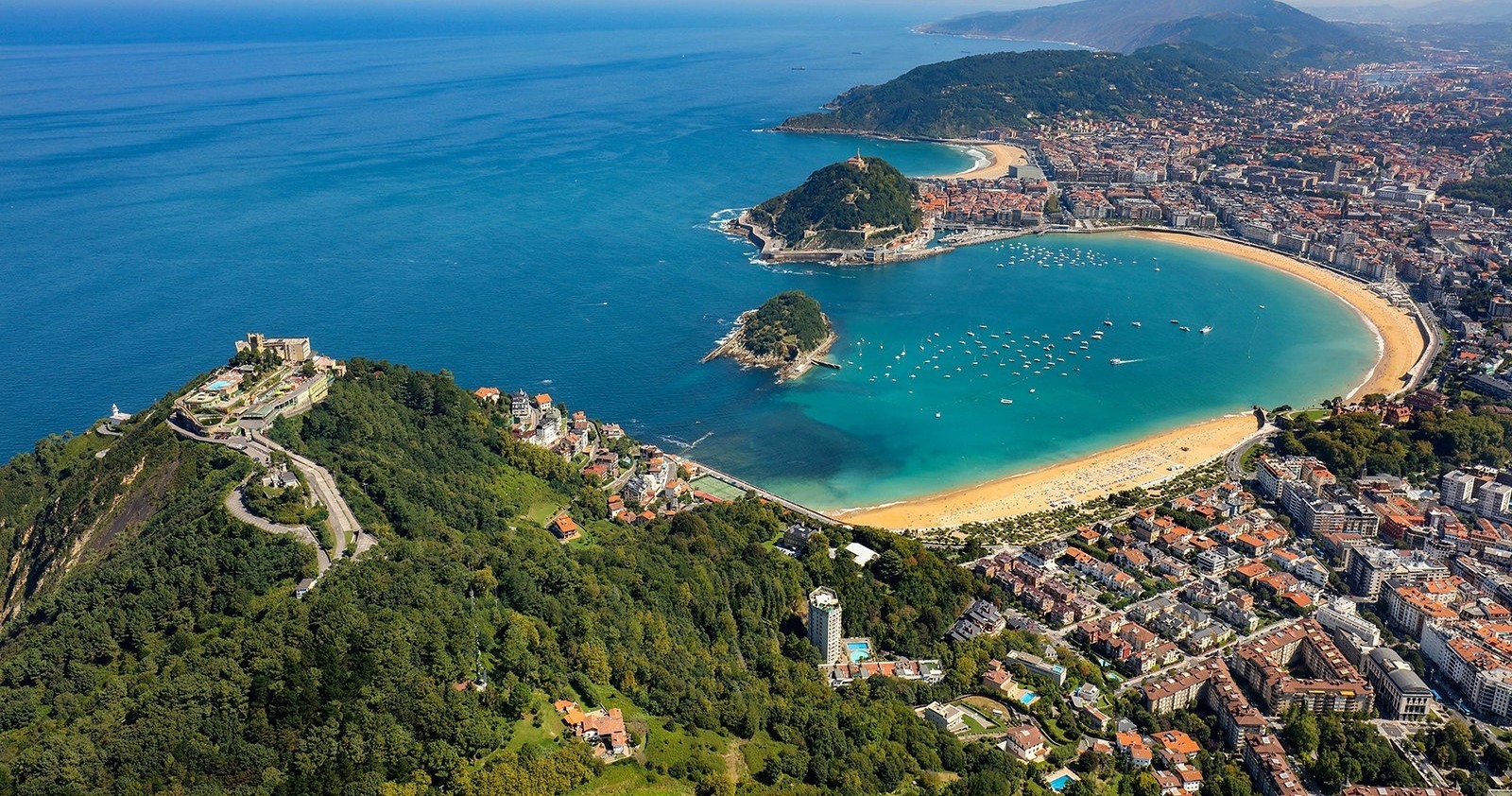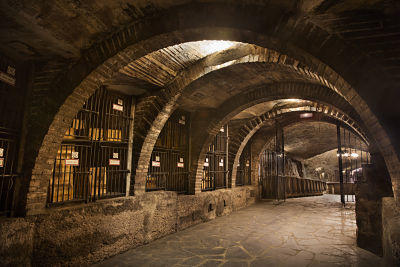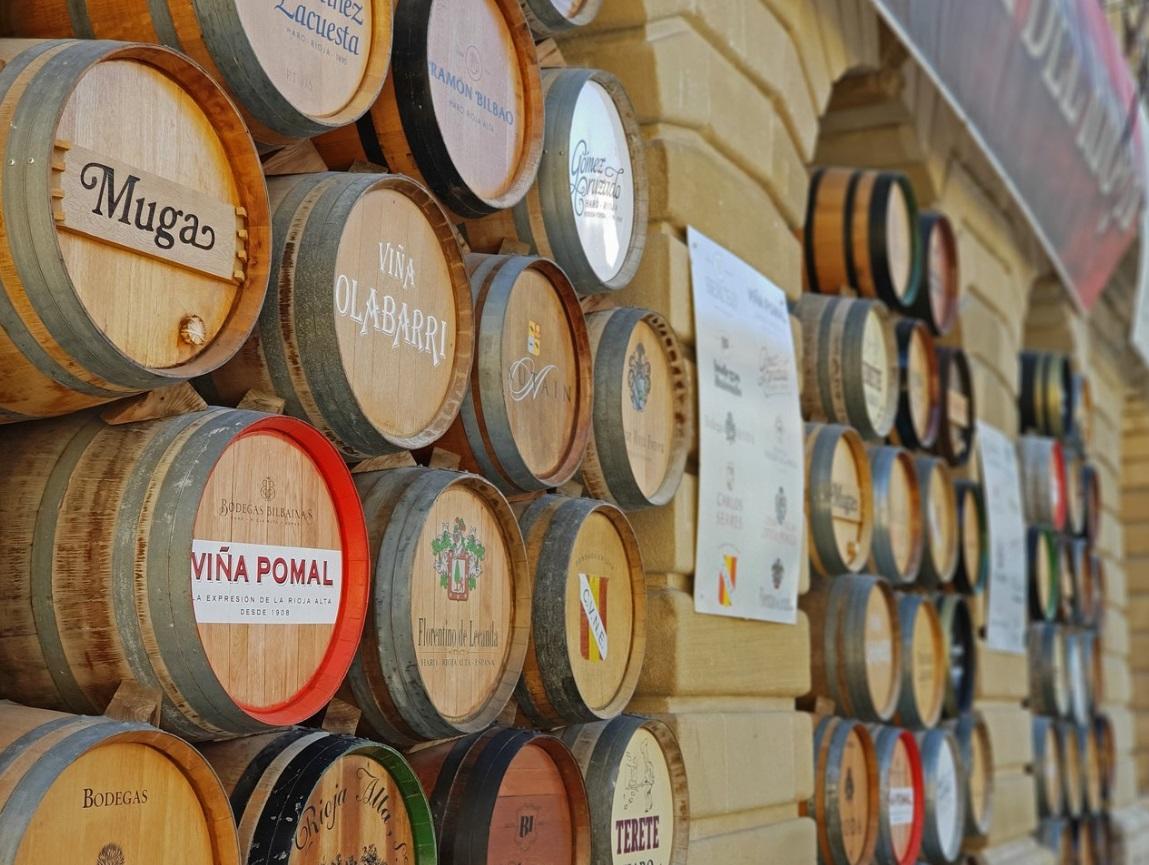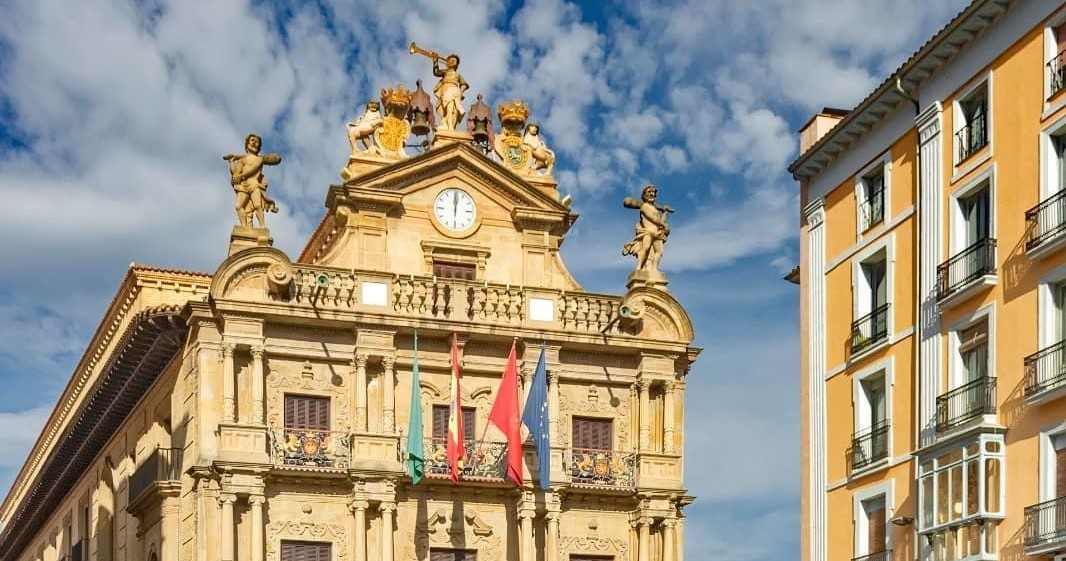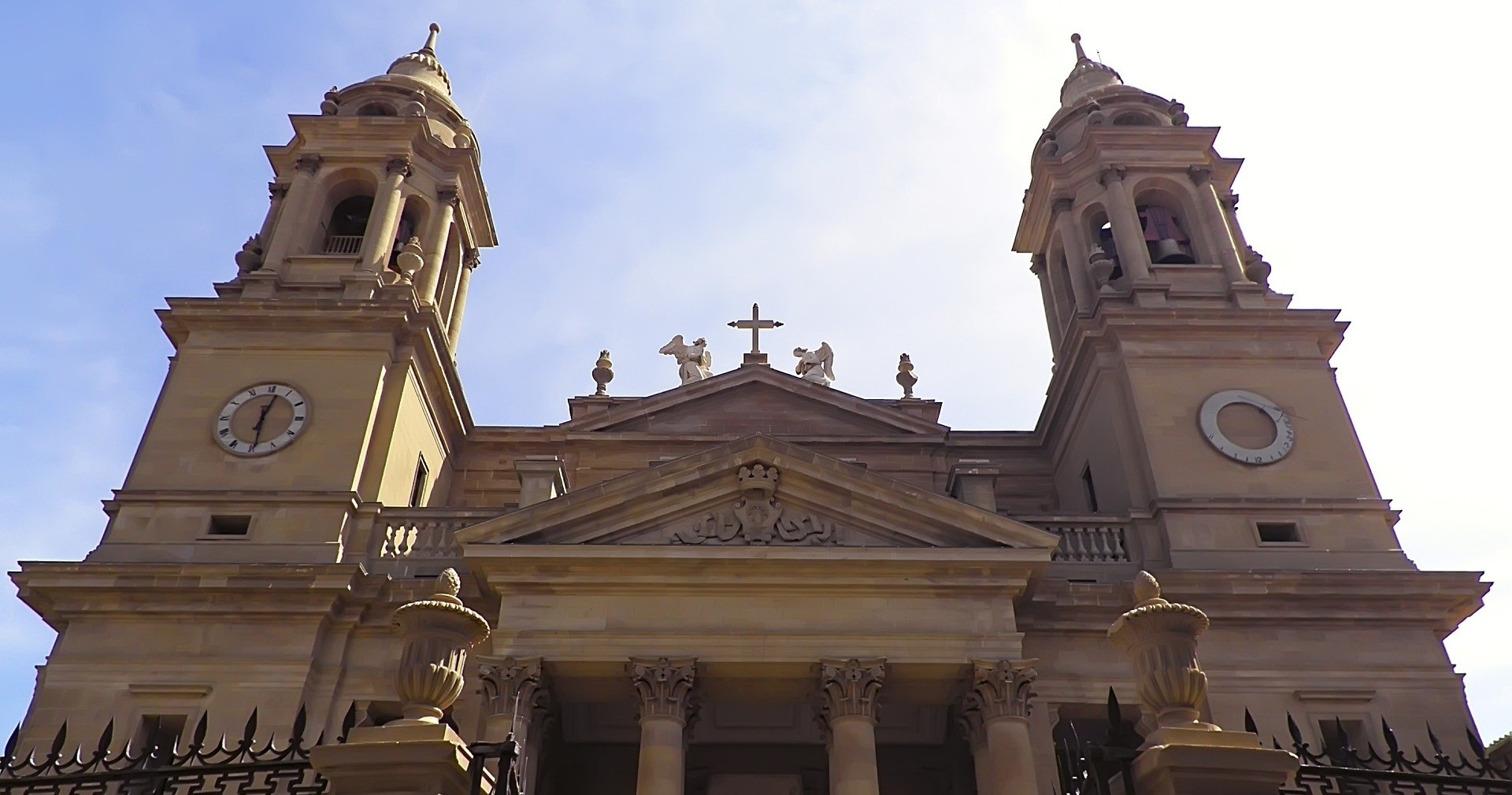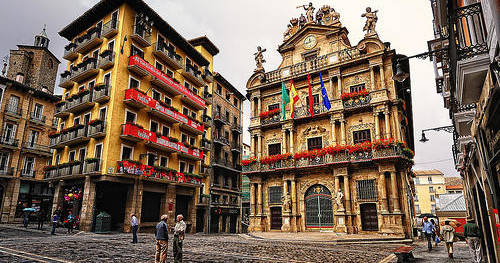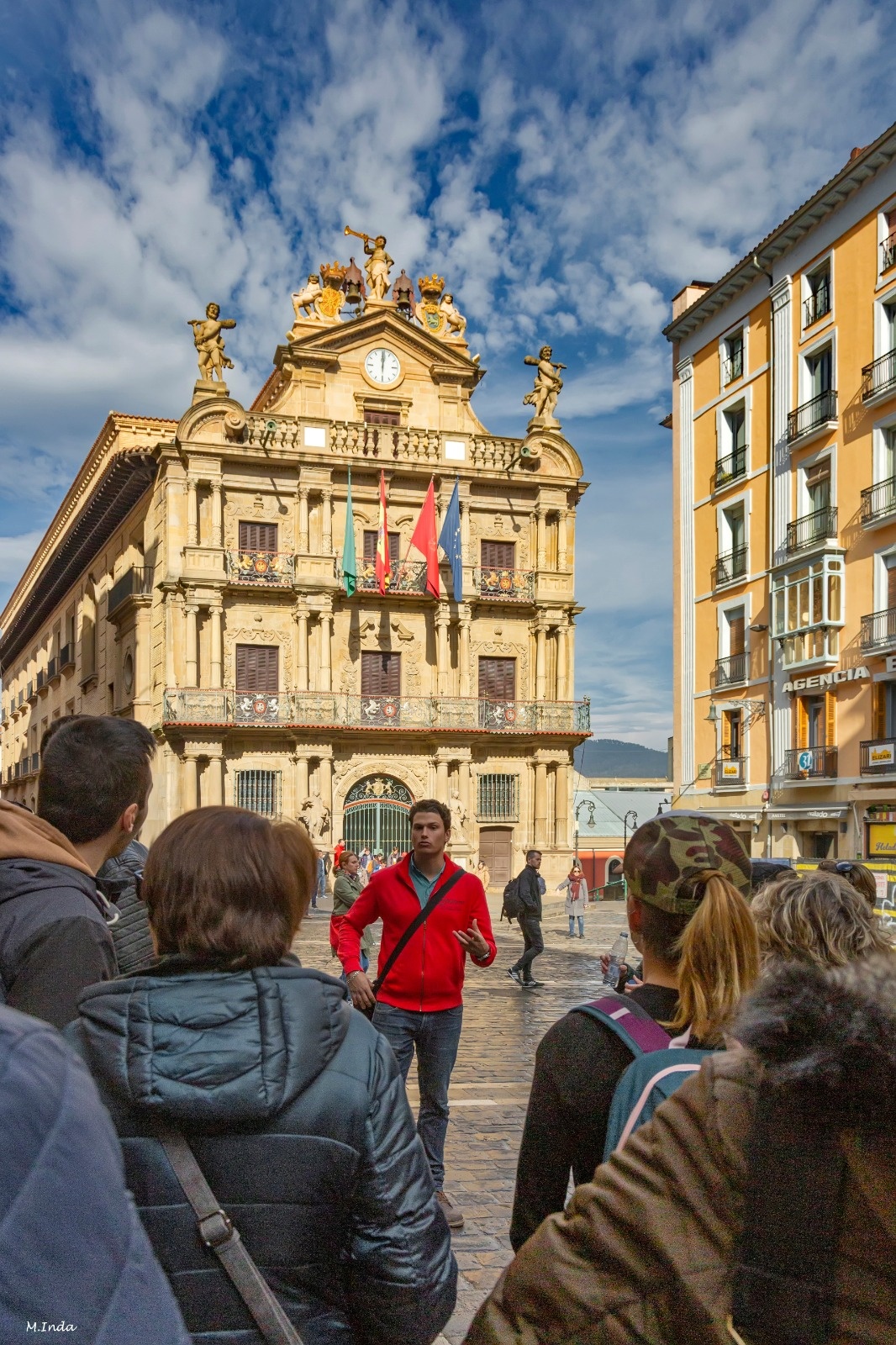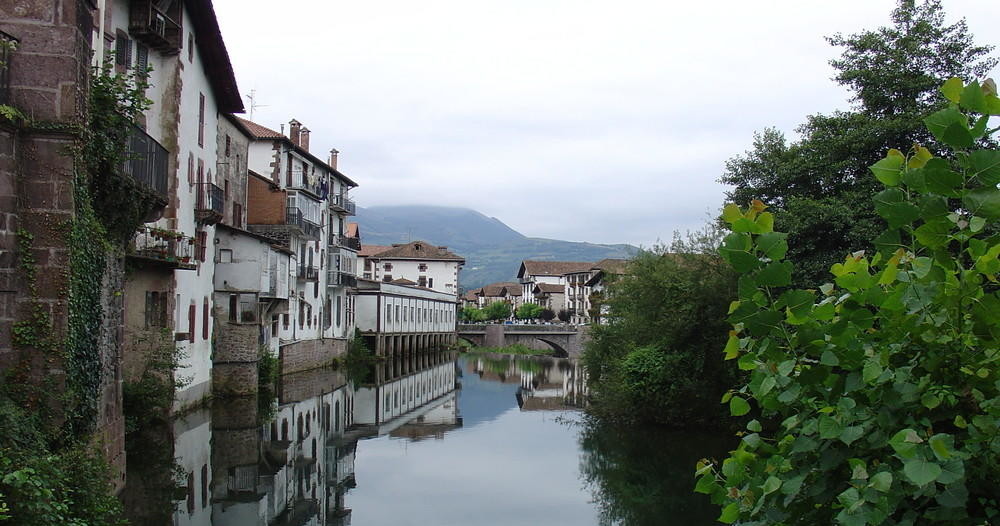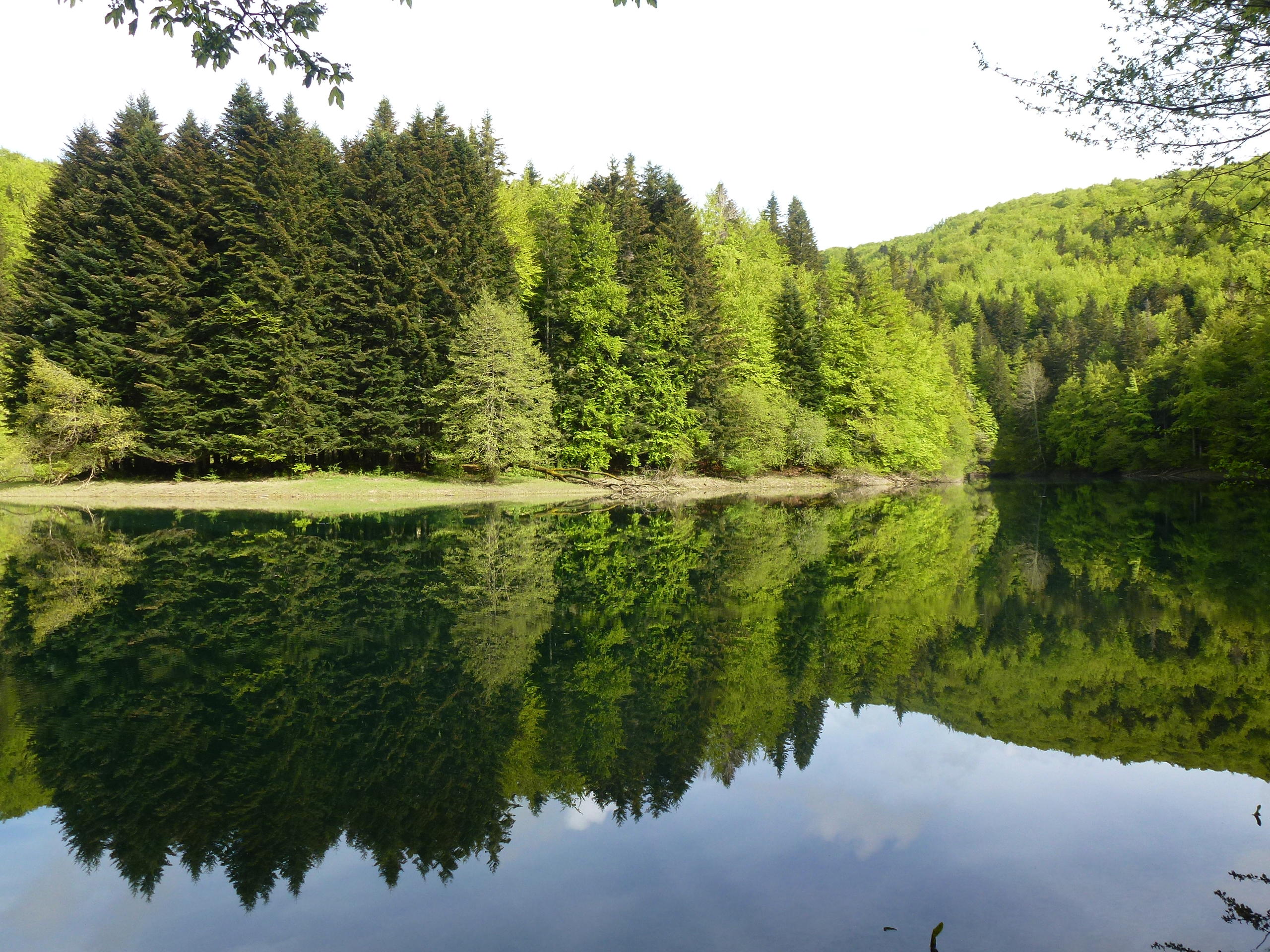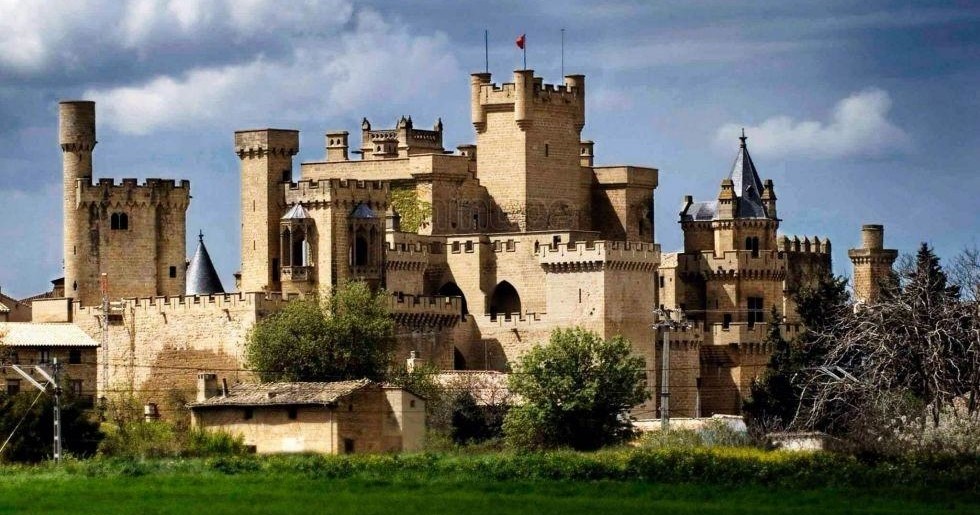The cathedral of Santa María la Real in Pamplona is notable for housing the impressive 15th century alabaster mausoleum of Charles III ‘the Noble’, King of Navarre, and his wife, Doña Leonor de Trastámara. Built in the Gothic style, this vast cathedral was constructed between the 14th and 15th centuries. Its beautiful French Gothic cloister is exceptional beautiful and its fascinating to spot the tiny figures sculpted in its capitals depicting animals and craftspeople at work. Early bull runs are also portrayed, making it clear that bull culture has been important to the town for centuries. Pamplona Cathedral has been the site of the most important events in the Kingdom of Navarre, such as the coronation, unction, baptism and burial of kings. Today, it’s the first cathedral you encounter on the Way of St James when you follow the Roncesvalles route into the peninsula. In fact, it gives pilgrims stamps and official accreditation.
History of Pamplona Cathedral
Pamplona Cathedral has a long history. The current building covers a large area inside the city’s historic centre, in the highest part of Navarrería. An earlier Romanesque cathedral dating from the 9th or 10th century previously stood here but most of its choir area collapsed in 1390, although the façade and part of the chancel remained intact. A new Gothic cloister was built in the 14th century together with other structures, such as the Barbazana Chapel and refectory. The old Romanesque façade was replaced with a Neoclassical façade in the 18th century.
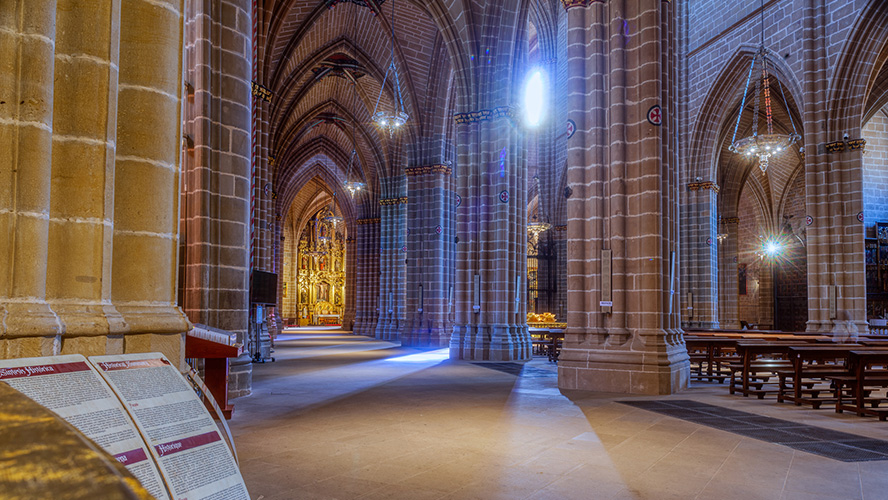
Interior and exterior architecture
The architecture of Santa María la Real is impressively robust. Despite being a Gothic cathedral, it has a Neoclassical main façade and is home to the second-largest bell in Spain, which weighs a remarkable 13 tonnes.
In addition to its wonderful Gothic cloister, the kitchen at Pamplona Cathedral is one of the only three surviving examples of a Gothic kitchen in Europe. It’s also well worth pausing in front the main façade because it’s one of the purest and most representative examples of Neoclassicism in Spain.
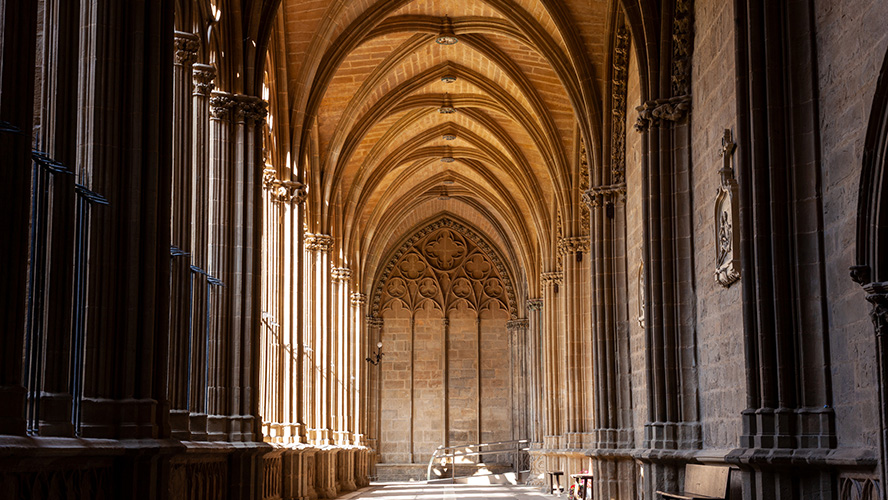
What to see on your visit
The cathedral has several interesting chapels, especially the chapel of St John the Baptist; for centuries it was a parish church of the same name that was linked to the cathedral and served the Navarrería neighbourhood. The oldest chapel is San Jesucristo or Pedro de Roda, a Romanesque structure that dates from the end of the 12th century. It’s thought that this building was part of a royal and episcopal palace that once stood in this part of the cathedral complex.
The Chapterhouse Library at Pamplona Cathedral dates from 1760 and contains 135 codices, 141 incunabule and over 20,000 historical volumes. The oldest piece dates from 829 and is a document in the 13th century ‘Round Book’.
What’s more, Pamplona Diocesan Cathedral Museum has numerous religious and liturgical objects from the cathedral: gold and silverwork pieces, altarpieces, sculptures of the Virgin, chasubles, vestments, parish church crosses, documents, etc. The cathedral is also full of sculptures and paintings, and highlights include the sculptures of Santa María la Real and the Crucified Christ, life-size works that were made in the middle of the 16th century by Basque sculptor Juan de Anchieta. You should also look for a magnificent painting of St Christopher by Pedro de Roda that dates from 1773.
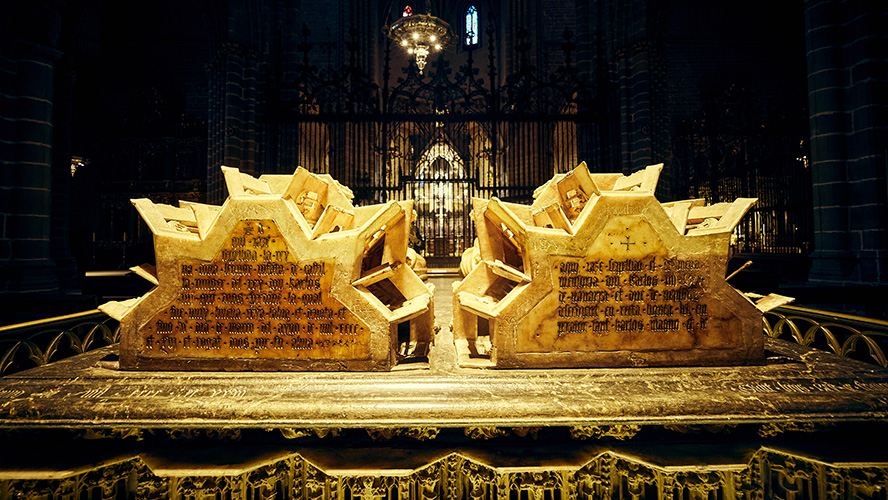
The two towers on the west façade of the cathedral contain 11 bronze bells ‒ the oldest, ‘La Gabriela’, was made in 1519 and weighs over 2,700 kg.
Occidens Exhibition
While you’re inside Pamplona Cathedral, make time to visit the “Occidens. Discover the Origins” exhibition, which takes you on a journey through the history and development of Western culture to encourage reflection and discovery. The display is divided into four parts or ages: Antiquity, the Middle Ages, the Modern Age, and the Contemporary Age. Experience the Battle of Las Navas de Tolosa, hear the voices of monks and discover the archaeological remains that are hidden beneath the cathedral’s floor.
Archbishop’s Palace
The Archbishop’s Palace is next to Pamplona Cathedral and is a Baroque building with a series of semi-circular windows on the upper part of its Neoclassical façade. During the Middle Ages, the square in front of the palace was the city’s Jewish Quarter and a synagogue once stood in this area. In the 16th century, the Mercedarians built a convent here and this building remained standing until 1945 when the plot was turned into Plaza de Santa María la Real, the square you see today.
Visitor information: opening times, prices, mass times, etc.
Pamplona Cathedral can be visited during liturgical ceremonies every day of the week. The cathedral museum opens from Monday to Saturday from 10.30 am to 6.00 pm in summer, except during religious events. It closes two hours earlier in winter and is closed on Sundays. You can climb the bell tower to see the María Bell every day at 11.15 am (except for Sundays) but must book in advance. There are guided tours in Spanish at 12 pm.
Tickets cost €5 for adults, €4 for pensioners and €3 for under-13s and pilgrims. Your ticket gives you entry to the cathedral, cloister, museum, and medieval rooms.





























































